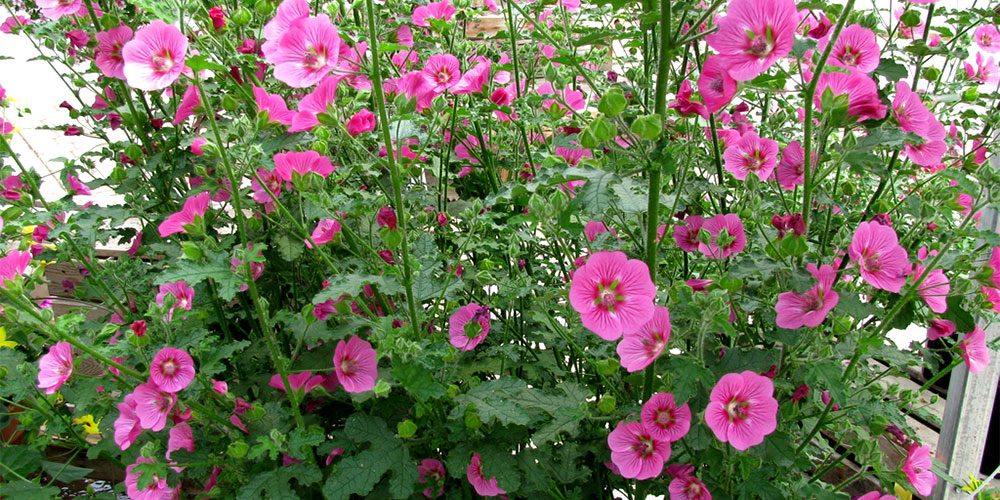Cape Mallow (Anisodontea) Plant Care
Cape mallow (Sidalcea malviflora) is a fast-growing, drought-tolerant perennial that produces showy blooms from spring to fall. This hardy plant is native to the western United States and does best in full sun. Cape mallow can reach up to 4 feet in height and spread up to 3 feet wide. While it is not particular about soil type, cape mallow prefers well-drained sandy or loamy soils.
To care for Cape Mallow, it is important to provide regular watering and fertilization throughout the growing season. Ensuring Cape Mallow gets enough water will help to promote healthy growth and vibrant blooms. Additionally, Cape Mallow may benefit from regular doses of a general-purpose fertilizer, especially during the spring and summer months.
Cape Mallow also prefers full sun to partial shade, depending on your climate. If you live in a hot, dry climate, Cape Mallow will appreciate some afternoon shade to help protect it from the harsh afternoon sun.
Cape mallow is a low-maintenance plant that is relatively pest and disease resistant. However, powdery mildew may develop in humid conditions. To avoid powdery mildew, water early in the day so the foliage has time to dry before nightfall.
How Often To Water Cape Mallow
Cape mallow plants are native to South Africa and thrive in well-drained, sandy soil. They are water-wise plants that require little water once established. However, during the hot summer months, they will appreciate a watering every three days to a week to help them stay hydrated.
To water your cape mallow, use a garden hose or irrigation system to very slowly and deeply water the base of the plant. Avoid getting water on the leaves, as this can encourage fungal diseases. When it comes to Cape Mallow care, less is more – too much water can actually be harmful to these hardy plants.
So, be sure to only water them when the soil is dry to the touch. With a little bit of TLC, your cape mallow will soon be blooming with beautiful blossoms!
When To Fertilize Cape Mallow
For best results, fertilize cape mallow once a month with a water-soluble fertilizer. Apply the fertilizer according to package directions, being careful not to over fertilize, which can damage the plant. A ratio of 12-6-6 or 10-10-10 is ideal for Cape Mallow fertilization. If you are unsure how much fertilizer to use, apply a light application and increase the amount as needed.
Fertilizing cape mallow at the proper time is important to ensure that the plant grows properly. Cape mallow requires fertilization in the spring and summer months. During the spring, fertilize cape mallow when new growth appears. During the summer, fertilize cape mallow every six weeks.
Apply a fertilizer with a high nitrogen content to Cape Mallow. Nitrogen helps with leaf and stem growth. For best results, follow the directions on the fertilizer package because too much fertilizer can damage the plant. Water the cape mallow plant after fertilizing to help the nutrients reach the roots.
How Do You Prune Cape Mallow?
Pruning Cape Mallow is critical for maintaining healthy and lush plants. In order to prune Cape Mallow effectively, you should start by looking over the entire plant to identify any damaged or dead branches. Next, cut away any branches that are diseased or damaged using garden pruners or a pruning saw. You may also prune off any lower branches that are growing too close to the ground, as these can crowd out other plants in your garden.
Just remember, all blooms appear on new growth, so periodic pinching back or clipping is advisable for heavier blooming and denser shape. Just don’t shear it too often. With regular pruning and proper care, your Cape mallow plants will stay healthy and beautiful for many years to come.
How Do You Propagate Cape Mallow
There are several different methods for propagating cape mallow, including division, cuttings, and seed. One of the most common techniques is division, which involves separating the roots into smaller clumps and transplanting each one to a separate pot. This method is suitable for both mature plants and younger specimens that are just starting to grow. Additionally, some gardeners prefer to propagate cape mallow using cuttings or seeds. In general, small stem cuttings will root more quickly than larger ones, while seeds take slightly longer to germinate but often lead to straighter growth patterns.
Ultimately, the best method will depend on your preferred technique and the specific growing conditions of your garden. Regardless of which approach you choose, though, you can be sure that this beautiful flower will flourish with proper care and attention.
How Do You Keep Cape Mallow Blooming?
Cape mallow is a beautiful, low-maintenance plant that blooms from spring until fall. However, if you want to keep your cape mallow blooming its best, there are a few things you can do. First, deadhead spent blooms regularly. This will encourage the plant to keep producing new flowers. Second, make sure to keep the plant well-watered.
Cape mallow is drought-tolerant, but it will bloom better if it receives regular water. Finally, apply a balanced fertilizer once a month during the growing season. By following these simple tips, you can keep your cape mallow blooming all season long!
Final Thoughts
Cape Mallow is a fast-growing, drought-tolerant perennial that produces showy blooms from spring to fall. This hardy plant is native to the western United States and does best in full sun. Cape mallow can reach up to 4 feet in height and spread up to 3 feet wide. With proper care, Cape Mallow is sure to thrive in your garden for years to come!







